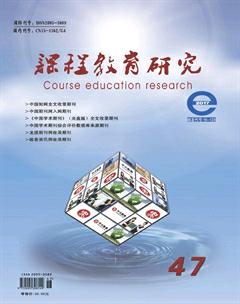A Brief Analysis of the Self correction Model
She+++Ali
【Abstract】Based on the theory of postmethod pedagogy and the teaching practice, this paper proposes a new teaching model— Self-correction model, and explains it from the point of view of discovery theory in psychology.
【Keywords】self-correction model; discovery; theory
【中圖分類號】H31 【文獻標識碼】A 【文章編號】2095-3089(2017)47-0118-01
There are many psychological views about the theories of language teaching. This article intends to explore the self-correction model from the perspective of discovery theory in psychology “in order to benefit the English teaching and research” (Ge, 2004).
1.Introduction
Kumravadivelu put forward the theory of postmethod pedagogy in TESOL(Teaching English to Speakers of other languages) in 2001. It requires the teachers to develop and practise their own theory and use it to guide the teaching practice. It also redefines the role of teachers and students in foreign language teaching. The teachers are clearly defined as the creator of the theory. Under the guidance of postmethod pedagogy “create teachers own teaching theory” (Tao, 2007), this paper put forward a new teaching mode-self-correction model and explains it from the point of view of discovery theory in psychology.
2.The Concept of the Self-correction Model
This “Self-correction Model” can be divided into the following six steps. Step 1, translating. The learner translates the native language into the target language. Step 2, comparing. the learner compares the learners language with the target language to find out the differences. Step 3, analyzing. The learner analyzes the causes of these differences. Step 4, correcting. The learner corrects the differences or error places according to the rules and forms of the target language. Step 5, memorizing. The learner abandons the error sentences and keeps the correct sentences of the target language in mind. Step 6, reproducing. The learner uses the correct sentences of the target language in other similar situations.
3.Discovery theory and the Self-correction Model
Bruner is a scholar with a good reputation in western psychology and education. He believes that “Discovery is the best way to learn” (Yuan, 2006) The discovery he put forward made an emphasis on the active exploration and he thought finding the principles from the changing things is the main aspect of learning. According to Bruner, what the teacher teach should be turned into what the students want to learn and the process of teaching should be changed into the process of acquiring actively. In addition, Bruner also believes that the feedback is process of the students adjustment from the wrong to the correct process. The fourth step in self-correction is that the learners compares the learners language with the the target languge and analyzes it to get the correct answer through their own exploration. The learners are not directly instilled some stiff knowledge, but obtain the right knowledge about the target language in the process of seeking it. And in the whole process, learners find the correct answers through finding their own mistakes, which is a very meaningful learning. In Bruners view, the teaching should make students learn in accordance with their own way. When students learn in accordance with their own way, they also learned how to learn. Therefore, self-correction is the autonomous process of acquiring the second language acquisition rather than passively accepting the knowledge of the second language. It is the main way to obtain personal knowledge, especially when people face the new challenges of knowledge, or the pursuit of academic perspicacity. It changes what the teacher taught into what the student explored and the students choose to learn what they want to.
4.Conclusion
In the research and application of language teaching theory for the twenty-first Century, psychological theory combining with linguistics has become a trend. In order to meet the requirements of “deepening the reform of College English further” (Liu, 2011), the teachers should fully understand the psychological theories about learning, and absorb the reasonable core of each school criticizing to“establish foreign language teaching theories and practice system with Chinese characteristics” (Cui & Ma, 2012).
Reference
[1]葛玲芬.教育心理學在英語教學中的運用[J].外語與外語教學,2004(6):39-41.

